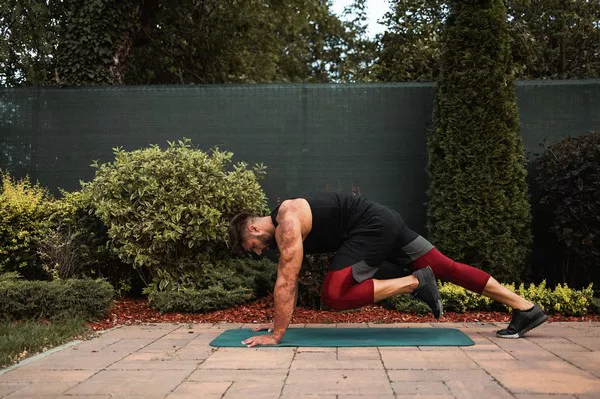Cardiovascular endurance, also known as aerobic fitness, is a crucial component of overall health and fitness. It refers to the ability of the heart, lungs, and blood vessels to deliver oxygen to the body’s tissues during sustained physical activity. Improving cardiovascular endurance not only enhances athletic performance but also reduces the risk of cardiovascular diseases, improves mental health, and boosts overall well-being. In this article, we will explore various cardiovascular endurance exercises to help you achieve your fitness goals effectively.
Understanding Cardiovascular Endurance
Before delving into specific exercises, it’s essential to understand how cardiovascular endurance works. When you engage in aerobic activities, such as running, swimming, or cycling, your heart rate increases, and you begin to breathe more rapidly. This increased demand for oxygen prompts your heart to pump more blood to deliver oxygen-rich blood to your muscles.
Over time, consistent aerobic exercise strengthens your heart, improves lung function, and enhances the efficiency of your cardiovascular system. This results in better endurance, allowing you to sustain physical activity for longer durations without experiencing fatigue.
Benefits of Cardiovascular Endurance Exercises
Regular cardiovascular endurance exercises offer a multitude of benefits for your overall health and well-being:
Improved Heart Health: Aerobic exercise strengthens the heart muscle, improves blood circulation, and lowers blood pressure, reducing the risk of heart disease and stroke.
Enhanced Respiratory Function: Cardiovascular workouts increase lung capacity and efficiency, enabling you to take in more oxygen with each breath and expel carbon dioxide more effectively.
Weight Management: Engaging in aerobic activities helps burn calories and promotes fat loss, contributing to weight management and preventing obesity.
Increased Energy Levels: Regular exercise improves energy levels by enhancing circulation and oxygen delivery to tissues, reducing feelings of fatigue and increasing vitality.
Mental Well-being: Cardiovascular workouts stimulate the release of endorphins, neurotransmitters that promote feelings of happiness and reduce stress, anxiety, and depression.
Better Sleep: Regular physical activity can improve sleep quality and duration, leading to more restful nights and increased daytime alertness.
Types of Cardiovascular Endurance Exercises
There are various types of cardiovascular endurance exercises, ranging from high-impact activities like running to low-impact options such as swimming. Incorporating a variety of exercises into your routine can help prevent boredom, reduce the risk of overuse injuries, and target different muscle groups. Below are some effective cardiovascular endurance exercises to consider:
1. Running and Jogging
Running and jogging are popular aerobic exercises that can be done virtually anywhere with minimal equipment. Whether you prefer outdoor runs or treadmill workouts, running engages multiple muscle groups, including the legs, core, and upper body. It also provides a high-intensity cardiovascular workout that can improve endurance and burn calories efficiently.
2. Cycling
Cycling is a low-impact aerobic exercise that offers an excellent cardiovascular workout while being gentle on the joints. Whether you opt for outdoor cycling or stationary biking, cycling strengthens the legs, glutes, and core muscles while improving cardiovascular endurance. It’s suitable for people of all fitness levels and can be easily modified to increase or decrease intensity.
3. Swimming
Swimming is a full-body workout that engages almost every muscle group while providing a low-impact cardiovascular workout. The resistance of the water challenges your muscles, while the rhythmic breathing pattern enhances lung capacity and endurance. Swimming is particularly beneficial for individuals with joint pain or mobility issues, as it reduces stress on the joints while providing a challenging workout.
4. Jump Rope
Jumping rope is a simple yet effective cardiovascular exercise that can be done virtually anywhere with minimal space and equipment. It elevates your heart rate quickly, improves coordination, and enhances cardiovascular endurance. Jumping rope also strengthens the calves, thighs, and core muscles, making it a versatile exercise for individuals of all fitness levels.
5. HIIT (High-Intensity Interval Training)
HIIT involves alternating between short bursts of high-intensity exercise and brief periods of rest or lower-intensity activity. This type of training is highly effective for improving cardiovascular endurance, burning calories, and boosting metabolism. HIIT workouts can include a variety of exercises such as sprinting, burpees, jumping jacks, and mountain climbers, allowing for endless combinations to keep workouts challenging and engaging.
6. Rowing
Rowing is a full-body cardiovascular exercise that engages the legs, core, back, and arms while providing a low-impact workout. Whether you’re using a rowing machine or rowing on water, this activity improves cardiovascular endurance, strength, and coordination. Rowing also offers the benefit of being a non-weight-bearing exercise, making it suitable for individuals with joint issues or those recovering from injuries.
7. Dancing
Dancing is a fun and effective way to improve cardiovascular endurance while expressing creativity and rhythm. Whether you prefer Zumba, salsa, hip-hop, or ballroom dancing, moving to the beat of music elevates your heart rate, burns calories, and improves coordination and balance. Dancing is a social activity that can be enjoyed alone or with others, making it a versatile option for people of all ages and fitness levels.
8. Circuit Training
Circuit training involves performing a series of exercises targeting different muscle groups with minimal rest in between. This type of workout not only builds strength and muscle endurance but also provides a cardiovascular challenge. By incorporating a combination of resistance exercises, bodyweight movements, and aerobic activities into a circuit, you can improve overall fitness and endurance while maximizing calorie burn.
Conclusion
Incorporating cardiovascular endurance exercises into your fitness routine is essential for improving heart health, enhancing respiratory function, managing weight, boosting energy levels, and promoting mental well-being. Whether you prefer running, cycling, swimming, or dancing, finding activities that you enjoy and that challenge your cardiovascular system is key to maintaining a healthy and active lifestyle. Remember to start slowly, gradually increase intensity and duration, and listen to your body to prevent injury and optimize results. By making cardiovascular exercise a regular part of your routine, you can enjoy the numerous benefits it offers for your body, mind, and overall quality of life.
[inline_related_posts title=”You Might Be Interested In” title_align=”left” style=”list” number=”6″ align=”none” ids=”8675,8595,8598″ by=”categories” orderby=”rand” order=”DESC” hide_thumb=”no” thumb_right=”no” views=”no” date=”yes” grid_columns=”2″ post_type=”” tax=””]
































